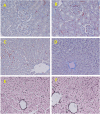Characteristics, chemical compositions and biological activities of propolis from Al-Bahah, Saudi Arabia
- PMID: 28165013
- PMCID: PMC5292687
- DOI: 10.1038/srep41453
Characteristics, chemical compositions and biological activities of propolis from Al-Bahah, Saudi Arabia
Abstract
Propolis has been used to treat several diseases since ancient times, and is an important source of bioactive natural compounds and drug derivatives. These properties have kept the interest of investigators around the world, leading to the investigation of the chemical and biological properties and application of propolis. In this report, the chemical constituents that are responsible for the anticancer activities of propolis were analyzed. The propolis was sourced from Al-Baha in the southern part of the Kingdom of Saudi Arabia. Standard protocols for chemical fractionation and bioactivity-guided chemical analysis were used to identify the bio-active ethyl acetate fraction. The extraction was performed in methanol and then analyzed by gas chromatography-mass spectrometry (GC-MS). The major compounds are triterpenoids, with a relative concentration of 74.0%; steroids, with a relative concentration of 9.8%; and diterpenoids, with a relative concentration of 7.9%. The biological activity was characterized using different approaches and cell-based assays. Propolis was found to inhibit the proliferation of cancer cells in a concentration-dependent manner through apoptosis. Immunofluorescence staining with anti-α-tubulin antibodies and cell cycle analysis indicated that tubulin and/or microtubules are the cellular targets of the L-acetate fraction. This study demonstrates the importance of Saudi propolis as anti-cancer drug candidates.
Conflict of interest statement
The authors declare no competing financial interests.
Figures






Similar articles
-
Preparative mass-spectrometry profiling of bioactive metabolites in Saudi-Arabian propolis fractionated by high-speed countercurrent chromatography and off-line atmospheric pressure chemical ionization mass-spectrometry injection.J Chromatogr A. 2014 Jun 20;1347:17-29. doi: 10.1016/j.chroma.2014.04.068. Epub 2014 Apr 28. J Chromatogr A. 2014. PMID: 24831423
-
Organic Tracers from Asphalt in Propolis Produced by Urban Honey Bees, Apis mellifera Linn.PLoS One. 2015 Jun 15;10(6):e0128311. doi: 10.1371/journal.pone.0128311. eCollection 2015. PLoS One. 2015. PMID: 26075382 Free PMC article.
-
Chemical characterization and cytotoxic activity evaluation of Lebanese propolis.Biomed Pharmacother. 2017 Nov;95:298-307. doi: 10.1016/j.biopha.2017.08.067. Epub 2017 Sep 12. Biomed Pharmacother. 2017. PMID: 28850929
-
The anticancer activity of propolis.Folia Histochem Cytobiol. 2012 Apr 24;50(1):25-37. doi: 10.2478/18693. Folia Histochem Cytobiol. 2012. PMID: 22532133 Review.
-
Anticancer Activity of Propolis and Its Compounds.Nutrients. 2021 Jul 28;13(8):2594. doi: 10.3390/nu13082594. Nutrients. 2021. PMID: 34444754 Free PMC article. Review.
Cited by
-
Propolis and Their Active Constituents for Chronic Diseases.Biomedicines. 2023 Jan 18;11(2):259. doi: 10.3390/biomedicines11020259. Biomedicines. 2023. PMID: 36830794 Free PMC article. Review.
-
Application of Nanocomposites from Bees Products and Nano-Selenium in Edible Coating for Catfish Fillets Biopreservation.Polymers (Basel). 2022 Jun 12;14(12):2378. doi: 10.3390/polym14122378. Polymers (Basel). 2022. PMID: 35745953 Free PMC article.
-
Pharmaceutical Prospects of Bee Products: Special Focus on Anticancer, Antibacterial, Antiviral, and Antiparasitic Properties.Antibiotics (Basel). 2021 Jul 6;10(7):822. doi: 10.3390/antibiotics10070822. Antibiotics (Basel). 2021. PMID: 34356743 Free PMC article. Review.
-
Chemical characterization of Saudi propolis and its antiparasitic and anticancer properties.Sci Rep. 2021 Mar 8;11(1):5390. doi: 10.1038/s41598-021-84717-5. Sci Rep. 2021. PMID: 33686109 Free PMC article.
-
Composition and functional properties of propolis (bee glue): A review.Saudi J Biol Sci. 2019 Nov;26(7):1695-1703. doi: 10.1016/j.sjbs.2018.08.013. Epub 2018 Aug 17. Saudi J Biol Sci. 2019. PMID: 31762646 Free PMC article. Review.
References
-
- Walker F. E. Paclitaxel (TAXOL): side effects and patient education issues. Seminars in oncology nursing 9, 6–10 (1993). - PubMed
-
- Uchida J. et al.. Comparison of side effects caused by intra-arterial and intravenous infusion of M-VAC (methotrexate, vinblastine, adriamycin and cisplatin) for urothelial cancer. Hinyokika kiyo. Acta urologica Japonica 43, 637–640 (1997). - PubMed
-
- Brockmann B., Geschke E., Schmidt U. M. & Ebeling K. Therapeutic results and toxic side effects of the cytostasan, adriamycin and vincristine combination as second line therapy in metastatic breast cancer. Geburtshilfe und Frauenheilkunde 51, 383–386, doi: 10.1055/s-2007-1026163 (1991). - DOI - PubMed
-
- Brockmann B., Kirchhof I., Geschke E. & Schmidt U. M. Therapeutic results and toxic side effects of the combination cytostasan, adriamycin and vincristine as second-line therapy of metastatic breast cancer. Archiv fur Geschwulstforschung 59, 341–346 (1989). - PubMed
Publication types
MeSH terms
Substances
LinkOut - more resources
Full Text Sources
Other Literature Sources
Molecular Biology Databases
Miscellaneous

